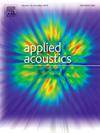A fatigue life prediction method based on multi-signal fusion deep attention residual convolutional neural network
IF 3.4
2区 物理与天体物理
Q1 ACOUSTICS
引用次数: 0
Abstract
The traditional fatigue life prediction method is to construct a mathematical model of the material fatigue degradation process to achieve material fatigue life prediction. However, this method heavily relies on the prior knowledge and expertise of researchers, which limits its generalization. In order to address this limitation, a multi-signal fusion deep attention residual convolutional neural network (MSF-DARCN) model is proposed in this paper for fatigue life prediction. The acoustic emission signal and temperature signal of metallic materials throughout its entire life cycle are integrated into the MSF-DARCN model to learn the fatigue degradation process of the material from multiple information sources and improve its fatigue life prediction accuracy. At the same time, the MSF-DARCN model leverages both channel attention and temporal attention mechanisms to learn important feature information in input data and enhance its sensitivity to the feature information of material degradation process. Additionally, the stacked residual convolutional structures of the MSF-DARCN model are employed to extract the spatial features of input data to enhance its feature extraction ability. Finally, based on the fatigue life experiment of 304 stainless steel specimens, the accuracy and effectiveness of the MSF-DARCN model are analyzed. The results indicate that the MSF-DARCN model exhibits high accuracy in predicting fatigue life.
基于多信号融合深度注意残差卷积神经网络的疲劳寿命预测方法
传统的疲劳寿命预测方法是建立材料疲劳退化过程的数学模型,实现材料疲劳寿命预测。然而,这种方法严重依赖于研究人员的先验知识和专业知识,这限制了它的推广。针对这一局限性,本文提出了一种多信号融合深度注意残差卷积神经网络(MSF-DARCN)模型用于疲劳寿命预测。将金属材料全寿命周期的声发射信号和温度信号集成到MSF-DARCN模型中,从多个信息源了解材料的疲劳退化过程,提高其疲劳寿命预测精度。同时,MSF-DARCN模型同时利用通道注意和时间注意机制,学习输入数据中的重要特征信息,增强其对材料降解过程特征信息的敏感性。此外,利用MSF-DARCN模型的叠加残差卷积结构提取输入数据的空间特征,增强其特征提取能力。最后,通过304不锈钢试件的疲劳寿命试验,分析了MSF-DARCN模型的准确性和有效性。结果表明,MSF-DARCN模型具有较高的疲劳寿命预测精度。
本文章由计算机程序翻译,如有差异,请以英文原文为准。
求助全文
约1分钟内获得全文
求助全文
来源期刊

Applied Acoustics
物理-声学
CiteScore
7.40
自引率
11.80%
发文量
618
审稿时长
7.5 months
期刊介绍:
Since its launch in 1968, Applied Acoustics has been publishing high quality research papers providing state-of-the-art coverage of research findings for engineers and scientists involved in applications of acoustics in the widest sense.
Applied Acoustics looks not only at recent developments in the understanding of acoustics but also at ways of exploiting that understanding. The Journal aims to encourage the exchange of practical experience through publication and in so doing creates a fund of technological information that can be used for solving related problems. The presentation of information in graphical or tabular form is especially encouraged. If a report of a mathematical development is a necessary part of a paper it is important to ensure that it is there only as an integral part of a practical solution to a problem and is supported by data. Applied Acoustics encourages the exchange of practical experience in the following ways: • Complete Papers • Short Technical Notes • Review Articles; and thereby provides a wealth of technological information that can be used to solve related problems.
Manuscripts that address all fields of applications of acoustics ranging from medicine and NDT to the environment and buildings are welcome.
 求助内容:
求助内容: 应助结果提醒方式:
应助结果提醒方式:


